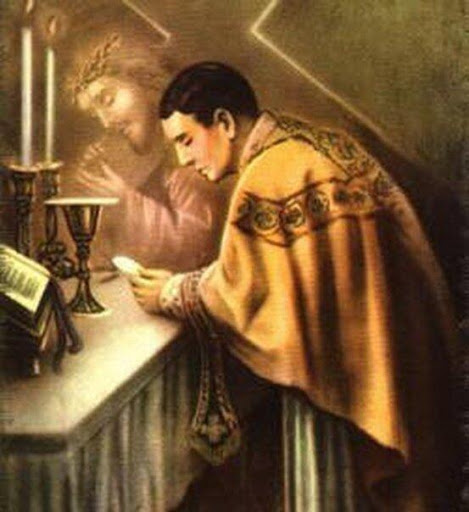In the Mass the priest offers bread and wine at the offertory. These symbolize the humanity of Christ and are also a symbol of us, the laity. Just as out of many grains of wheat we obtain one bread, and out of many grapes we obtain one chalice of wine, so we, the many faithful, make up one body of worshippers. The unconsecrated bread and wine upon the altar represent the prayers and sacrifices of the faithful placed upon the altar in union with Christ’s perfect sacrifice upon the rock of Calvary, His perfect prayer, the holy sacrifice of the Mass. We join Christ on Calvary.

Having placed ourselves upon the altar with Christ and joining our sacrificial offering in union with His, we die with Christ in the moment the priest consecrates bread and wine. The separate consecrations of bread and wine represent the separation of blood from the body, signifying the death of Christ in which we join. We mystically leave time and place to enter into Christ’s eternal sacrifice on Calvary, the wedding feast of the lamb. Having died with Christ at the consecration we now prepare to rise with Him in holy communion.
At Holy Communion we rise with Christ and into his divine life through the sanctifying grace we receive in the Eucharist. The Mass has a three fold effect. First, we are incorporated into the death of Christ. Second, we are incorporated into the supernatural life of Christ. Third, we are incorporated into the Mystical Body of Christ. The natural substances of bread and wine have been transubstantiated into the living body and blood of Jesus, whom we receive in Holy Communion and into whom we are incorporated, having ourselves been “consumed” into Christ’s Mystical Body, the Church, in which we live and share our being with Him in the Blessed Trinity.
